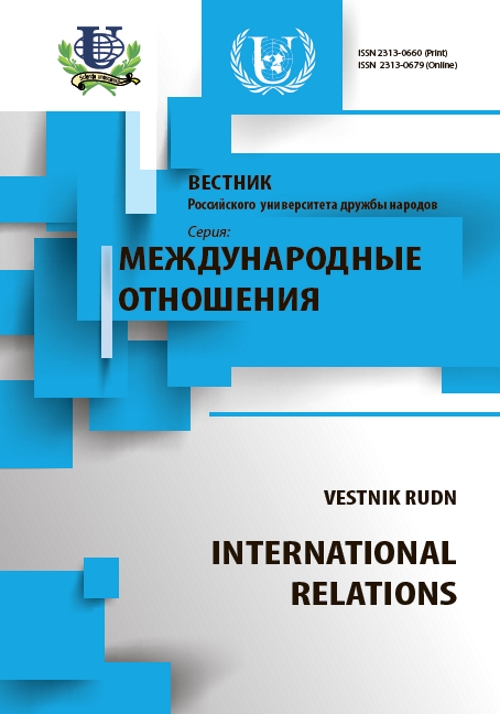International and Russian Experience in Forming and Promoting Innovation Clusters
- 作者: Sayapina K.V.1
-
隶属关系:
- Peoples’ Friendship University of Russia
- 期: 卷 16, 编号 1 (2016): "Soft Power" in International Relations. The Image of Russia
- 页面: 65-74
- 栏目: Articles
- URL: https://journals.rudn.ru/international-relations/article/view/10529
如何引用文章
全文:
详细
The article is devoted to analysis of peculiarities in forming and promoting Russian and international innovation clusters. Cluster's orientation to innovation is its significant feature: cluster approach is fully realized in many countries all over the world, because it is the cluster frames which increase opportunity of creating a unique innovation idea, together with speed and effectiveness of commercialization process. Innovation potential, sufficiency of productional and distributional facilities, long-term management strategy, optimization of external and internal cluster connections are key features to provide competitive advantages of the innovation cluster. In the article key principals of innovation cluster formation in the leading states are considered: the core of cluster is predominantly a scientific research center or higher institution, with large and small industrial companies as the cluster participants, with significant governmental support. In the article the main tendencies of innovation cluster international development are underlined: companies' efforts to increase competitiveness on basis of vertical integration; horizontal integration as an attempt to decrease production costs through specialization improvement; conglomerate consolidation to take down risks through diversification; growth of transnational innovation clusters of the largest industrial companies to gain point on the global market. Measures of forming efforts to effective promotion of innovation clusters on international markets are interaction of companies with specialized technological platforms, participation in federal and regional events to stimulate research and development activity; realization of permanent comparative analysis with leading foreign practices under key factors of development, and formation of innovation ecosystem, including business-incubators, accelerators, venture funds, personnel education and technological enterpreneurship in frames of cluster.
作者简介
Karina Sayapina
Peoples’ Friendship University of Russia
编辑信件的主要联系方式.
Email: k.v.sayapina@gmail.com
The department of marketing
参考
- Granberg A. G. Osnovy regional'noi ekonomiki [Guidelines of regional economics]. Moscow, GU-VshE, 2003, 496 p.
- Raevskii S.V., Vinokurova Yu.V. Klasternaya kontseptsiya organizatsii struktury ekonomiki regionov [Cluster concept of regional economic structure organization]. Regional'naya ekonomika. 2003, no. 7, pp. 19-22.
- Rygalin D.B. Aspekty realizatsii klasternogo podkhoda. [Aspects of cluster approach realization]. InVestRegion, 2006, no. 3, pp. 60-63.
- Tsikhan T.V. Klasternaya teoriya ekonomicheskogo razvitiya [Cluster theory of economic development]. Teoriya i praktika upravleniya, 2003, no. 5, pp. 18-40.
- Shishkov Yu. V. Regionalizatsiya i globalizatsiya mirovoi ekonomiki: al'ternativa ili vzaimodopolnenie? [Regionalization and globalization in global economics: is it an alternative or complementarity?]. Mirovaya ekonomika i mezhdunarodnye otnosheniya, 2008, no. 8, pp. 3-20.
- Boudeville, Jacques Raoul. Problems of Regional Economic Planning. Edinburgh, UK: Edinburgh University Press, 1966. 208 p.
- Cohen, Saul Bernard. Geopolitics: the Geography of International Relations. PA, USA: Rowman & Littlefield Publishers, 2014. 504 p.
- Enright, Michael J. Regional clusters: what we know and what we should know. Paper present at the Kiel Institute International Workshop on Innovation Clusters and Interregional Competition. 2001, №12-13, 25 p.
- Heckscher, Eli Filip. The Continental System; an Economic Interpretation. Charlestone, USA: BiblioBazaar, 2009. 438 p.
- Kauffman, Alexander & Franz Todtling. Science-industry interaction in the process of innovation – the importance of boundary-crossing between systems. ERSA conference papers, European Regional Science Association. 2000, 25 p.
- Launhardt, Wilhelm. Mathematical Principles of Economics (Classics in the History of Economics). Cheltenhamm UK: Edward Elgar Pub, 1993. 208 p.
- List, Friedrich. National System of Political Economy: The History (Three Volumes in One). New York, USA: Cosimo Classics, 2011, 514 p.
- Marshall, Alfred. Principles of Economics (Great Minds Series). New York, USA: Prometheus Books, 1997, 319 p.
- Ohlin, Bertil. Interregional and International Trade: Revised Edition. Massachusets, USA: Harvard University Press.,1967, 340 p.
- Perroux, Francois. A New Concept of Development: Basic Tenets (Routledge Library Editions: Development). London, UK: Routledge, 2010, 221 p.
- Porter, Michael. Competitive Strategy: Techniques for Analyzing Industries and Competitors. London, Great Britain: Free Press, 1998, 397 p.
- Pottier P. Axes de communication et development economique. Revue economique, 1963, Vol. 14, pp. 63-95.
- Richardson, Harry W. Regional Growth Theory. Macmillan, 1973, 274 p.
- Rosenfeld, Stuart A. Competitive Manufacturing: New Strategies for Regional Development. New Jersey, USA: CUPR/Transaction, 2012, 418 p.
- Schumpeter, Josef A. The Theory of Economic Development: An Inquiry into Profits, Capital, Credit, Interest, and the Business Cycle (Social Science Classics Series). New Jersey, USA: Transaction Publishers, 1982, 244 p.
- Walter, Isard. Methods of Regional Analysis: an Introduction to Regional Sciences. Cambridge MA, USA: The MIT Press, 1960, 784 p.
- Weber, Alfred. Alfred Weber's Theory of the Location of Industries. London, UK: Forgotten Books, 2015, 296 p.








